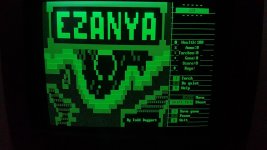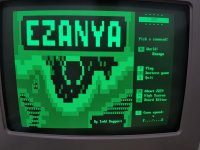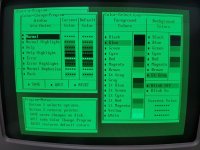freakedenough
Experienced Member
I always wondered why my Olivetti M24 SP (AT&T 6300) displays a light blue color with lines.
I found one "solution" via Google, but I'm not a English native and I simply do not understand what I should do now.
What exactly does that mean? What do I have to do to get rid of the lines (blue color is always a problem, see attachments)?
Connect PIN 2 to any other GND PIN on the card itself or what?
ftp://ftp.oldskool.org/pub/drivers/ATT/6300/Documentation/video_pinout.pdf
Thank you!
I found one "solution" via Google, but I'm not a English native and I simply do not understand what I should do now.
Source: ftp://ftp.oldskool.org/pub/drivers/ATT/6300/Documentation/Olivetti M24-240 FAQ.html
Let's look at the monitor. If you have a monochrome monitor can be connected to ground on pin 2 on DB25 jack Olivetti video card,
so you believe to be attached sheet for a color screen and remove the underscore attribute on some color
combinations from place to strange horizontal stripes.
What exactly does that mean? What do I have to do to get rid of the lines (blue color is always a problem, see attachments)?
Connect PIN 2 to any other GND PIN on the card itself or what?
ftp://ftp.oldskool.org/pub/drivers/ATT/6300/Documentation/video_pinout.pdf
Thank you!






